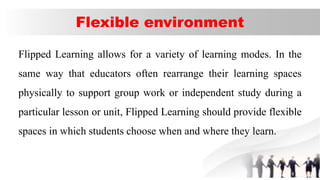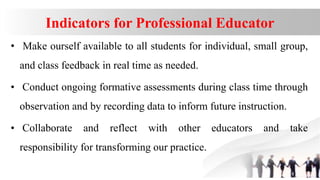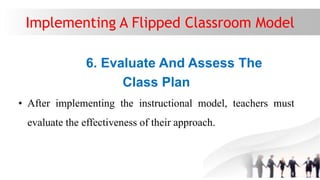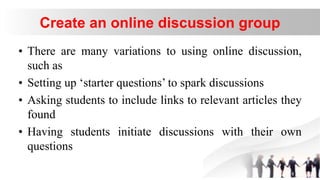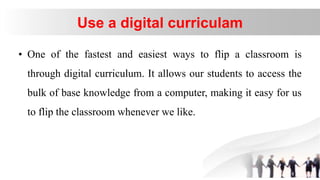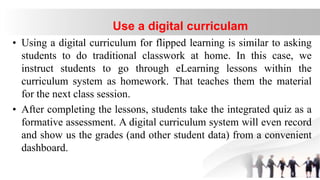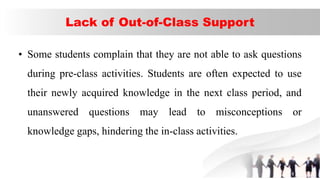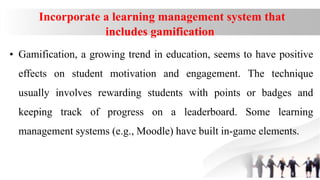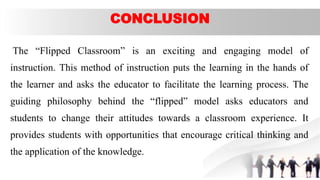Here are some potential challenges that may arise when implementing a flipped classroom model and some suggestions on how to address them:
1. Student buy-in and engagement with pre-class work
- Clearly communicate the purpose and benefits of pre-class work. Provide guidance on how long students should spend.
2. Technological issues
- Have backup plans that don't rely on technology. Test all resources before assigning. Provide alternatives for those without access.
3. Increased workload for teachers
- Start small by flipping just one unit. Streamline resources over time. Consider team-teaching to share the load.
4. Lack of support from administrators, parents or community
- Communicate goals


















